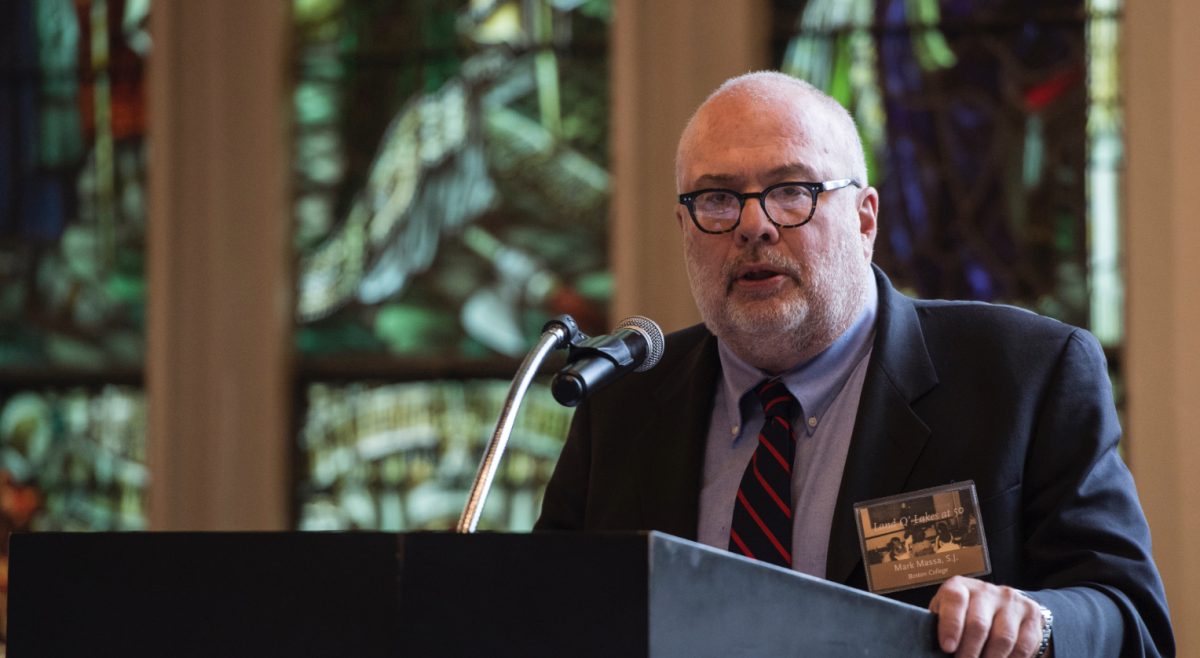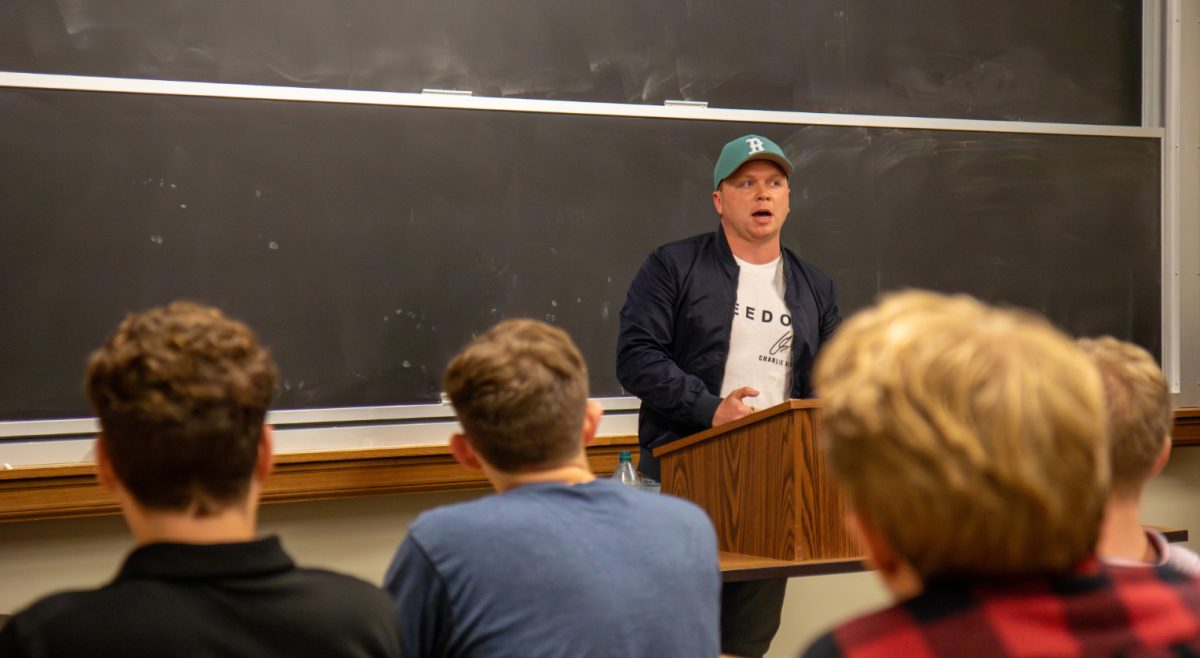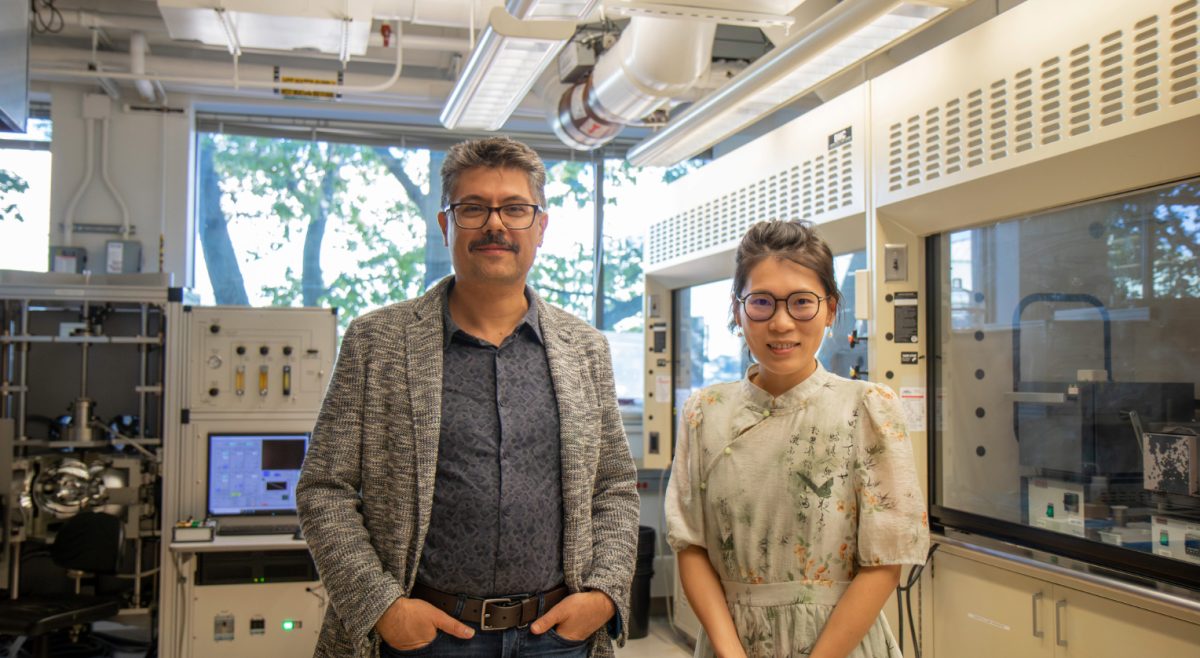The Undergraduate Government of Boston College’s Council for Students with Disabilities (CSD) held a town hall meeting last Tuesday in which students discussed BC’s campus accessibility and what could be done to make it more accessible for students with disabilities.
Introducing the topic was Bill Tibbs, director of planning and design at BC. He outlined the inherent obstacles to making BC’s campus fully accessible, steps the administration has taken to increase accessibility, and future projects to further increase it.
Tibbs began by pointing out several reasons why BC’s campus accessibility may not be up to students’ standards. First, the campus is steeply varying in elevation, meaning ramps would largely be out of the question to connect Lower, Middle, and Upper Campuses.
Furthermore, installing ramps, proximity sensors, and other accessibility measures is not a cheap task.
“It was low-hanging fruit, in that it was easy to realize we needed to do it,” Tibbs recalled. “But it was heavy because of the cost to fix it.”
For example, the ramps into O’Connell House and 90 St. Thomas More Drive cost the University $226,000 and $100,000, respectively. Making Carney accessible from McGuinn required the University to upgrade Carney’s elevators and install doors to “block off the corridors … after hours.”
Finally, building projects—be they additions, renovations, or construction of new buildings—take several years to plan, get approved, and carry out. All of these factors—the inherent terrain, the cost, and the long-term nature of projects—mean that making BC’s campus fully accessible is a long-term goal.
Tibbs pointed out that the University has taken steps to increase accessibility on campus. In addition to adding numerous ramps into most buildings on campus, BC also has its own accessibility consultant, who checks project plans to ensure accessibility.
The University now uses low-floor, or “kneeling,” busses to allow wheelchaired students to use them. Furthermore, Mr. Tibbs said BC is working proactively to settle potential issues before it receives complaints from students or state or federal authorities. He said in the past BC’s planning and design team has tended to be more reactive, but one of the things it has been working at is coming up with its own priorities on all that needs to be done before it gets requests from Student Affairs.
Tibbs ended the introductory presentation by talking about the University’s future projects to increase accessibility. In addition to adding more directional signs for accessible paths around campus, the University is updating campus maps to reflect accessible routes and entrances to buildings. The University also plans to add ramps to make McGuinn accessible from the front. He also stated that the University wants to work with students to help better the lives of students with disabilities on campus.
“We wanted to encourage student involvement, which is why I’m here tonight,” Tibbs said. “We want to hear what your opinions are, learn about issues we didn’t notice before, and put things that are important to you on our radar.”
After the introductory presentation, attendees discussed what else they think the University and students could do to make the campus more accessible. Initial ideas included reaching out to alumni to donate for accessibility measures and raising awareness on how difficult it is to be a student with disabilities at BC.
Despite the various resources at BC, such as Eagle Escort, Student Services, and the Disability Services Office, the group noticed that students with disabilities may not use the services for fear of being a burden.
“I think people need to understand that requesting these accommodations is not a burden,” UGBC President Akosua Achampong, MCAS ’18, said. “I think a lot of times, difference in any sense makes it seem like you’re putting pressure on others just for being who you are, but everyone has the right to function in this community.”
Ultimately, the attendees came to the consensus that immediate measures should work to combat the stigma of “invisible disabilities.” For example, Julia Arnese, CSD’s director of programming and MCAS ’20, talked about how she can not stay standing for a long time, so she cannot be in the student section during football games.
Although she does not need crutches or a wheelchair, she has a disability. The group believed that increasing understanding for all students with disabilities, such as having students only walk accessibility routes for a day, was the best way to combat the stigma.
“Not everyone’s in a wheelchair, but that doesn’t mean I’m not struggling,” Arnese said. “Sometimes, when I tell someone or a teacher, they give me a look like, ‘What are you talking about? You look fine.’ But I’m not fine. I wear my leggings and sneakers because my back hurts every day.”
Another short-term solution was to increase the CSD’s presence on campus to let students with disabilities know of the resource. Currently, CSD has QR codes on UGBC flyers and is in the process of adding them on Campus Activities Board flyers. A popular suggestion was to work with the Office of Student Involvement to see if the QR code could be required on all clubs’ flyers. Achampong also suggested that CSD directly reach out to students.
“CSD can send a message to disabled students, ‘If you want to get involved, ask questions, advocate for yourself and others, or just see how your student government can fulfill your needs please reach out to us—we’re here for you,’” she said.
Featured Image by Ruolin Lu / Heights Senior Staff














Claire Chatellier • Nov 8, 2017 at 8:31 pm
Hi, please contact me ASAP. Thank you.